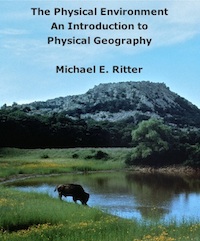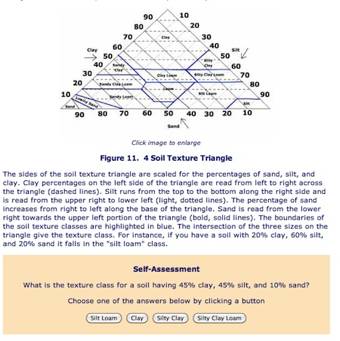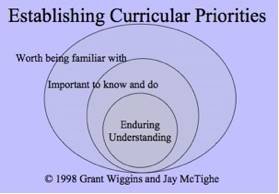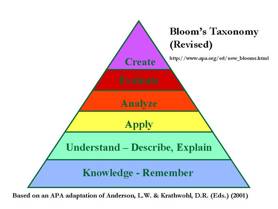About | Philosophy | TPE Features | TPE Contents | Accessing TPE | Who's Used TPE
National Council for Geographic Education
2011 Geography Excellence in Media Award winner
"... an amazing resource..."
~ About.com ~
"... goes beyond the standards set by a printed textbook..." ~ Textbook Revolution ~
" .. a great resource for
anyone interested in the physical world." ~ NSDL Scout Report ~
About The Physical Environment
The Physical Environment was one of the first, totally online physical geography learning environments. The Physical Environment combines text, images, audio and video programs to deliver the subject matter content. A multimedia online environment enables new and different ways to interact with textbook content. The potential of the World Wide Web to bring remote places to our digital devices, and its ability to interlink bits of information, breathes life into physical geography. The interconnectivity of the Web engages us in new ways of learning. Hyperlinked resources lets us stay abreast of the latest developments. The reader can explore in greater depth than ever before the physical world from their desktop or mobile digital device.
Like many educators, I have a hard time finding a textbook that is to my liking. Publishers have been rather slow to embrace online textbooks that leverage the capabilities of the Web. Those digital textbooks that are available tend to be print versions simply converted to digital. Most lack the interactivity and seamless integration of the rich resources available online.
I prefer my basic text to serve as a skeleton upon which I will "flesh out". That's what The Physical Environment tries to do, provide a foundation upon which an instructor can build. Special topics which are often found as focus boxes interspersed throughout the pages of a textbook are context embedded links. For instance, rather than explaining the phenomenon of El Niño here, links are provided to professional sites that provide a rich array of information relevant to the topic.
Most of the images found here are from public domain sources, or from those who have generously permitted their use for this textbook. I've created several textbook diagrams and though quite simple and frankly, not what you'd get from a commercial publisher, they get the point across.
Philosophy & Pedagogy
Focus on Assessment
Most introductory physical geography textbooks show little differentiation in the edificial approach taken. A weakness of printed textbooks is the lack of formative assessment and immediate feedback on learning. Formative assessments help provide feedback on learning as the the reader proceeds from concept-to-concept, and is especially important given the integrated nature of physical geography. Though printed textbooks usually include end of summative chapter review assessments, students usually get no immediate feedback from them. If they do get feedback it may be in a student answer guide or provided by an instructor, removed from the immediate learning context.
Self-assessment and demonstrating content mastery is an on-going activity as the reader proceeds through chapter and textbook content. A short assessment quiz about concepts presented in preceding chapters is provided as a check before reading the current chapter. Small formative activities (e.g. using a soil texture triangle) are embedded in each chapter to assess student comprehension as they proceed through it. At key points in a chapter, a set of short-answer review questions tied to chapter learning objectives are posed to assess understanding of the preceding section. Immediate feedback is given for all assessments. Conventional summative assessments with immediate feedback (e.g., end of chapter review questions, objective chapter tests) are also included.

Soil Texture Triangle Embedded Self-Assessment
Backward Design
TPE relies on backward design to establish the priority of textbook content. Backward design focuses on assessment first and instructional activities second. Backward design begins with the end in mind. One identifies the “enduring” understandings of what students should know, understand and be able to do. Concepts of enduring understanding are those that geography educators hope their students, especially potential majors, carry with them beyond their course. Even though the majority of students in a particular course are usually non-majors, certain concepts and issues can be applied by anyone after their course is complete. These may include the following: map reading, landform development processes, descriptive statistics, data visualization, understanding the basics of weather, human impact on the environment, biodiversity, and water resources. Over the past year I have surveyed all major physical geography textbooks and examined many introductory physical geography course outlines to identify common themes or the "enduring understanding" of the backward design method. These form the basic material for the textbook.
 Curricular Priorities in Backward Design.
Curricular Priorities in Backward Design.
Being a hypermedia document, the book content is scalable in terms of the depth of content an instructor and student needs to understand physical geography. The main content represents the enduring understanding. Some concepts link to "Digging Deeper...." sections that represent the "important to know and do" concepts that provide deeper meaning. Outside linked resources are the "Worth being familiar with" content.
- As an example of how this is employed in Chapter 4 "Energy and Radiation":
Enduring Understanding: "The Nature of Electromagnetic Radiation" - basic radiation laws dealing with radiation as a heat transfer process. This material is fundamental to knowing how the earth system is heated by radiation. - Important to know: "Digging Deeper into Atmospheric Absorption" - knowing why different gases absorb and emit energy at different wavelengths. This content helps explain the basis for the greenhouse effect.
- Worth being familiar with: "Global Dimming" - impact of particulates on incoming solar radiation and its effect on air temperature and global warming. This is a relatively new phenomena that may effect our understanding of how the "climate crisis" may unfold as we seek to reduce particulate pollution.
Assessment based on Bloom's Taxonomy
 Bloom's Taxonomy
Bloom's Taxonomy
Bloom's (revised) Taxonomy is used as a structural framework for learning chapter content. Each chapter begins with a set of learning outcomes written to address higher order skills. At the end of a chapter section, the student is presented with a formative assessment of basic knowledge and understanding (lower order skills) called "Looking Back at ..." These are 4 to 5 short answer questions. In addition, there are a few "Quick Concept Check" embedded multiple choice/matching questions to engage the student. These assessments build the student's basic knowledge incrementally to successfully address higher order learning outcomes on summative, end of chapter assessments.
Visual Approach
Increasingly, textbook authors are recognizing the importance of visually-rich textbook content. In so doing, depth of content is sometimes sacrificed. Adding a number of large,
full-color images to a print textbook also drives up the cost, an issue for both instructors and students these days. Publishing in a digital format, TPE provides many more visuals that can be scaled to different sizes and linked to pop-up out of the way of the chapter content. Thus depth of content can be retained while providing a rich visual experience.
The visual approach is reinforced with multimedia strategically integrated into chapter content. Rather than have animations as an add-on found on a CD-ROM or simply linked, the reader is directed to the animations as they read the textbook. The reader is instructed to manipulate the animation/simulation to actively involve them in the content and their learning rather than passively watching. Google Maps and Google Earth is used to illustrate a variety of landforms, examine earth processes, and tour regions of the earth.
Focus on Environmental Change
The
Physical Environment is an introduction to physical geography through the lens of environmental change. Every physical geography book talks about the role of time in earth systems processes, but this usually means investigating events in the past to explain the current physical geography of earth.TPE explains earth processes in order to  understand past, present, and just as importantly, the futurephysical geography of earth. Predicting future geographies is a difficult task, and so TPE relies heavily collective wisdom of the Intergovernmental Panel on Climate Change (IPCC), Union of Concerned Scientists, and reputable government resources.
understand past, present, and just as importantly, the futurephysical geography of earth. Predicting future geographies is a difficult task, and so TPE relies heavily collective wisdom of the Intergovernmental Panel on Climate Change (IPCC), Union of Concerned Scientists, and reputable government resources.
House damaged by melting permafrost.
(Source: Select Committee on Energy Independence and Global Warming)
Features
Many features are built into The Physical Environment to enhance learning. Scattered throughout the text are icons that link to multimedia and maps that bring added dimension to learning. Look for these icons:
- video
- audio
- visualization
- Google Earth file
- notable people (mostly geographers)
An online glossary is linked to terms and a distributed atlas is helpful for locating features and places discussed in the text.
Contents of The Physical Environment
On the "Contents" page you will find links to the various resources made available through The Physical Environment. The first link is to the text materials for the subject covered in a particular chapter. The text material is profusely illustrated with diagrams, graphs, photographs, and animations. Most of the photographs are from public domain sources so you are free to download these images. Contact me if you are unsure which ones are public domain before downloading.
Each chapter has a link to a Focus on the Physical Environment.
These links are to materials located outside The Physical Environment
web site. They are text, audio, or video materials that provide additional
detail concerning the subject of a chapter. Connections are
web-based resources that provide a connection between the subject of a
chapter to other areas of physical geography, or to human - environment
interactions. Several of the chapters have a Physical Geography Today
links
to real, or near real-time data concerning the subject of the chapter.
Many of the chapters have a How To ... section that demonstrates
how to undertake a particular activity like interpreting weather maps,
constructing topographic profiles, or calculating noon sun angles. The
Active Learning links are activities that use web-based sources
of information and data to explore the physical environment.
Geographers
at Work links you to biographies and articles about people who
practice geography to solve issues that confront science and society. This
section may include links to news articles or personal web sites that
describe how people got interested in geography and what they do. Special Topics pages are organized links added as unique events
relative to physical geography unfold (hurricanes, earthquake, volcanic
events). Finally, the Review and Resources link takes you to a web
page with links to important terms and concepts, review questions, a
self-assessment quiz, and web resources concerning the chapter topic.![]()
A companion blog and Twitter feed provides links to current events related to the textbook content and ways to improve studying physical geography. A companion video podcast illustrates common lab procedures and concepts addressed in most physical geography courses.
Using The Physical Environment
The web site has been formatted to be viewed full-screen at 800 X 600 resolution. The Physical Environment is formatted to be read online and is not meant to be printed. Therefore, I can't guarantee the web text will print correctly if you wish to do so.I've tried my best to make navigation through The Physical Environment as easy as possible. Links to the contents, glossary, atlas, and index are at the top of each page. A link to the chapter outline is provided in the upper right corner of a chapter web page. The outline link is formatted as bold and italicized text. Use the link to go to the outline and then jump to a specific section within a chapter. Links that take you outside of The Physical Environment will open in a new, pop-up browser window. Those using pop-up blockers need to configure them to take full advantage of these outside resources.
Potential users are free to link to any page of The Physical Environment. If you use materials from The Physical Environment, please credit the source and provide a link (https://www.earthonlinemedia.com/ebooks/tpe_3e/title_page.html) back to the title page if you decide to use this material. You should contact me before downloading any image as some are not in the public domain. Be aware, I created this book primarily for my introductory physical geography course and thus may not have all elements or detail that you wish to have included. I welcome suggestions for new content.
Published in digital form, The Physical Environment is a "living document". I revise and add new content as needed, usually between semesters but not always. So the content, and sometimes the structure, can change. The Physical Environment is ever evolving to address current events as they affect the physical environment. Hence there is no publication date per se. Even the notion of an edition, like those of a print textbook, becomes meaningless. Such is life on the Internet.
Your feedback is greatly appreciated as well.
I hope you find The Physical Environment of use in learning physical geography.
~ Michael E. Ritter ~
Professor of Geography
Department of Geography/Geology
University of Wisconsin - Stevens Point
